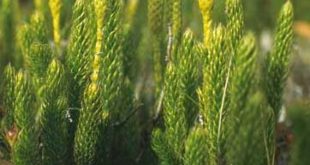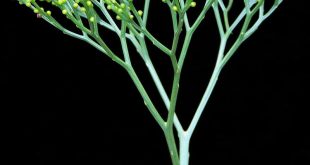Systematic Position Division: Lycophyta / Lepidophyta Class: Eligulopsida Order: Lycopodiales Family: Lycopodiaceae Genus: Lycopodium Also known as club mosses, Lycopods, creeping pines or tailing pines. Ligule: A membranous outgrowth projecting from the leaf sheath. On the basis of ligule, Lycophyta has 2 classes: Eligulopsida: Lycopodium phylloglossum Liqulopsida – Isoetales, Selaginellales …
Read More »Psilotum: The Whisk Fern
Psilotum is commonly known as Whisk-fern. Salient features of Pilotum The sporophytes are dichotomously branched with an underground rhizome and upright branches. The upright branches are leafless. Rhizoids are present instead of root. Stem has a relatively simple vascular cylinder. The sporangia are born in groups (trilocular) and form synangia. …
Read More »Pteridophytes: Types of Stele & Its Evolution
A stele is the central cylinder or core of vascular tissue in higher plants and Pteridophytes. It consists of the xylem, phloem, pericycle, medullary rays, and pith if present. The term stele has been derived from a Greek word meaning rod or column. Van Tieghem and Douliot (1886) introduced this …
Read More »Introduction to Pteridophyta
The word cryptogams is a synthesis of two Greek terms kruptos meaning ‘hidden’ and gamos meaning ‘wedded’. This single term encompasses all plants that reproduce by means of spores and, do not produce seeds. The algae, fungi, bryophytes and pteridophytes are all cryptogams. The pteridophyta are treated as vascular cryptogams …
Read More »Pteridophytes: Classification of Pteridophyta
The term Pteridophyta was first coined by Haeckel. Eichler (1883) divided the plant kingdom into Cryptogamia and Phanerogamia. The Cryptogamia was further divided into Thallophyta. Bryophyta and Pteridophyta. Engler (1909) included the Bryophyta and Pteridophyta under Embryophyta. Due to discovery of the fossil plants, the classification of Pteridophytes has undergone …
Read More » Plantlet The Blogging Platform of Department of Botany, University of Dhaka
Plantlet The Blogging Platform of Department of Botany, University of Dhaka




